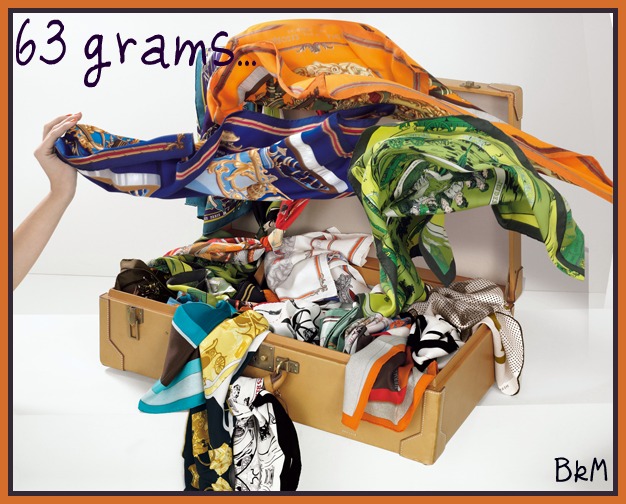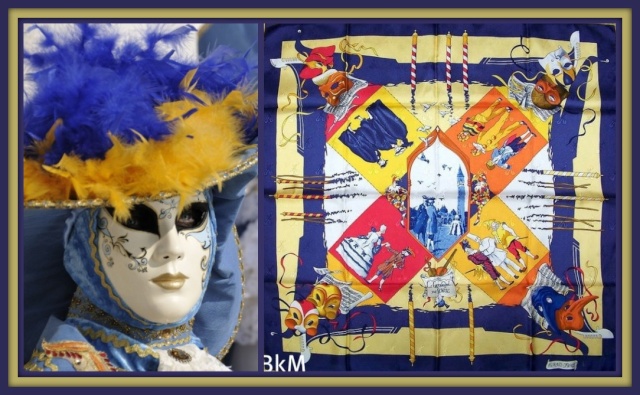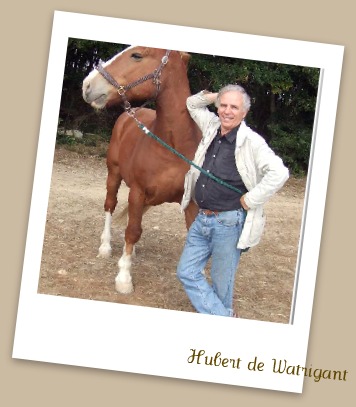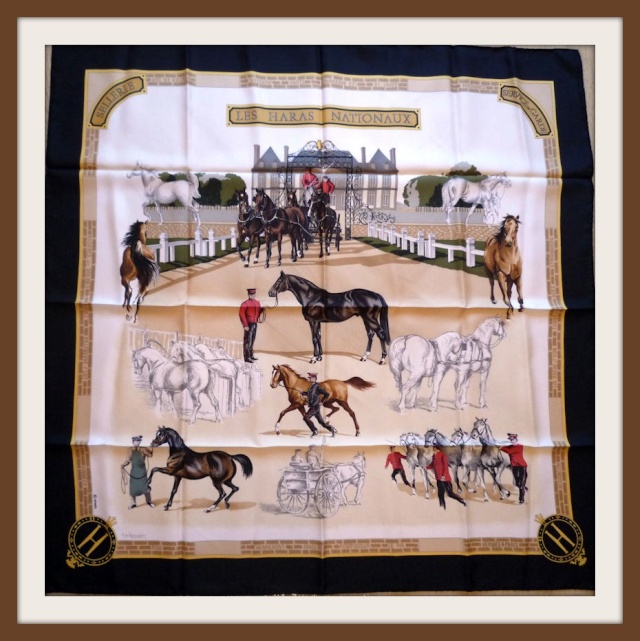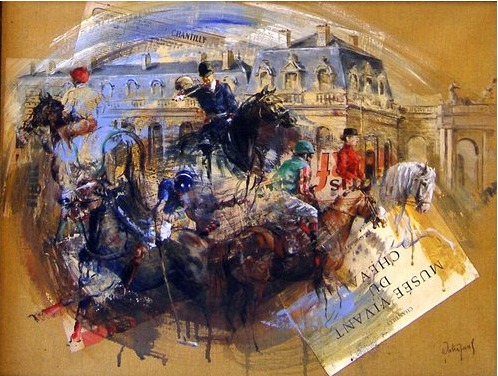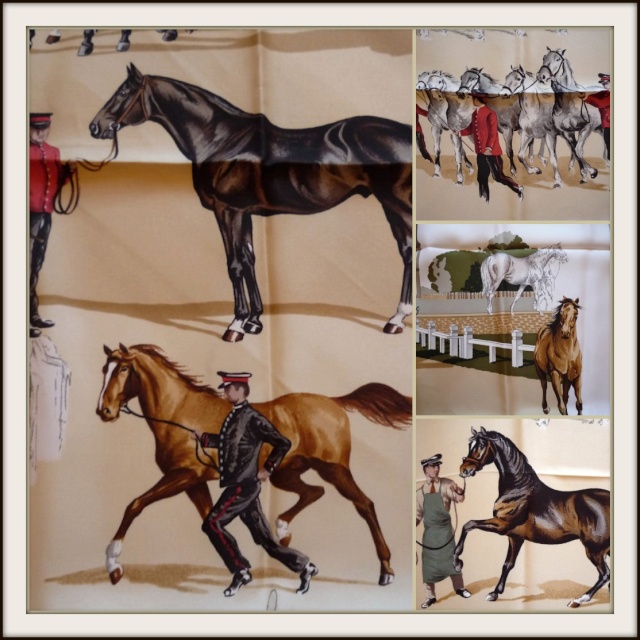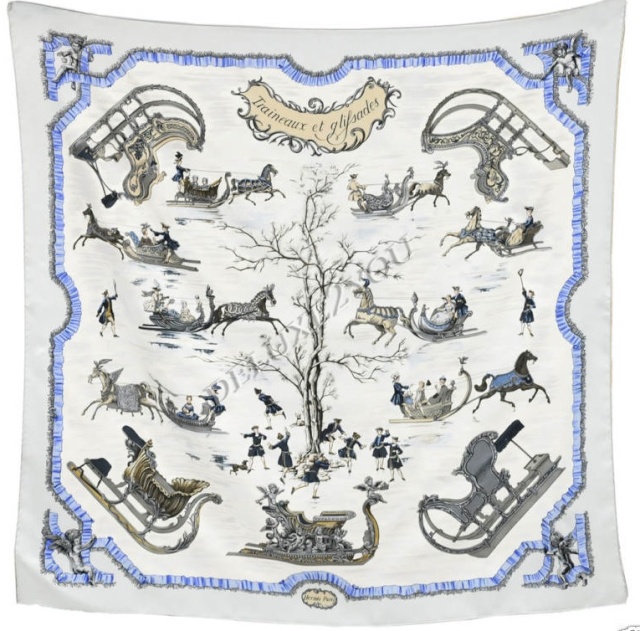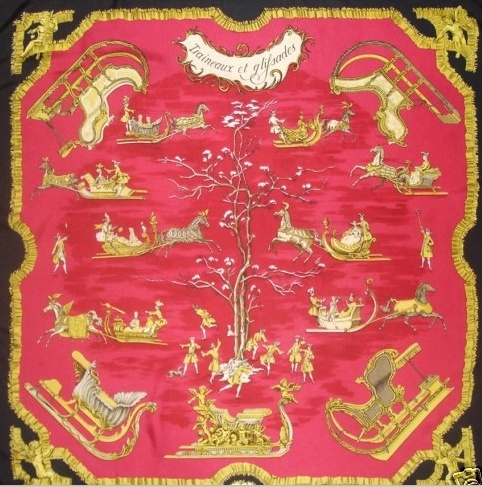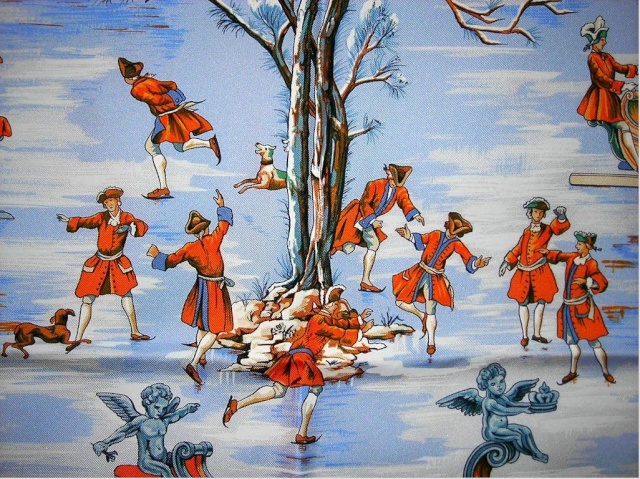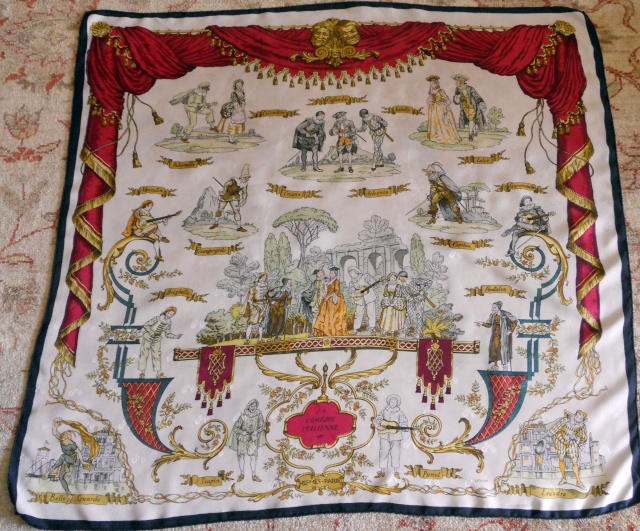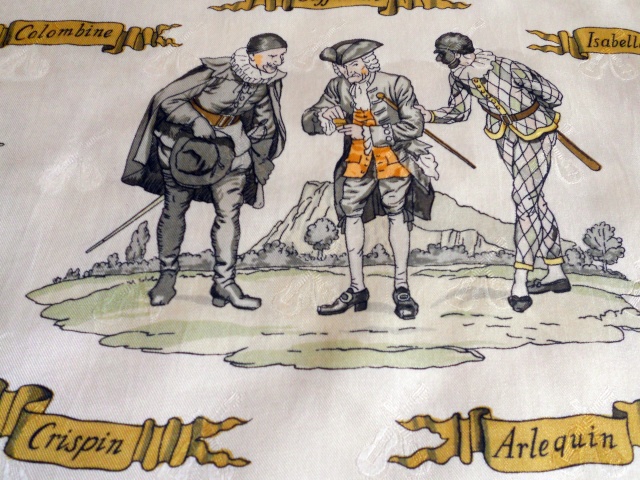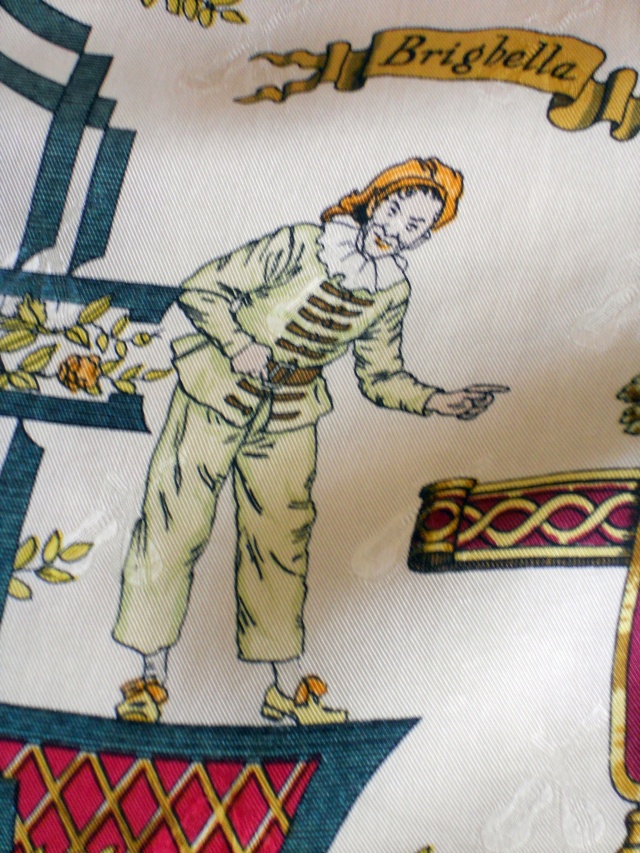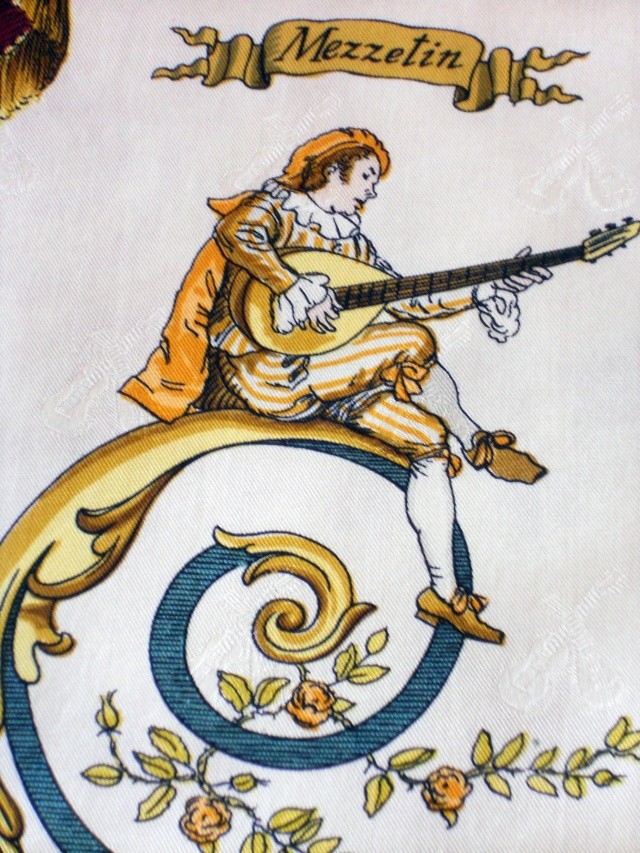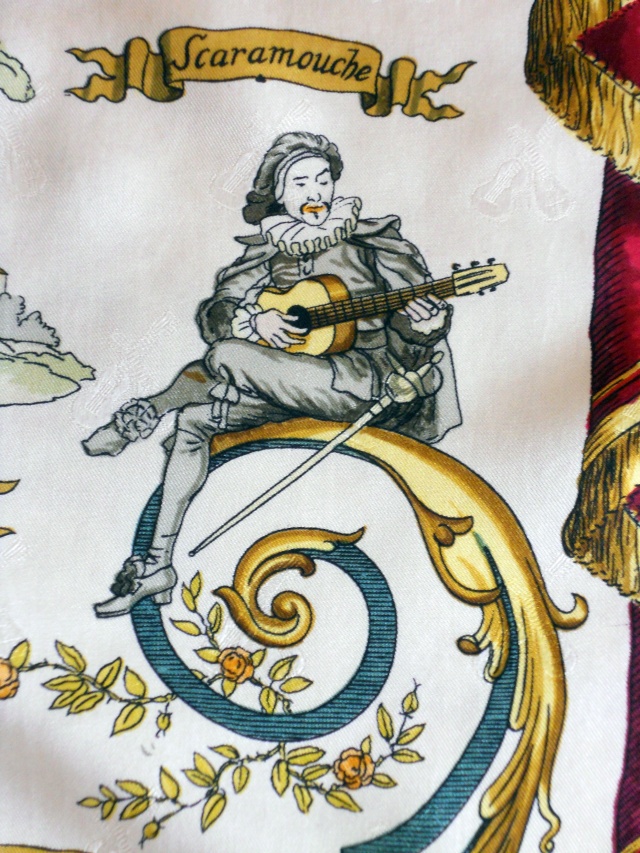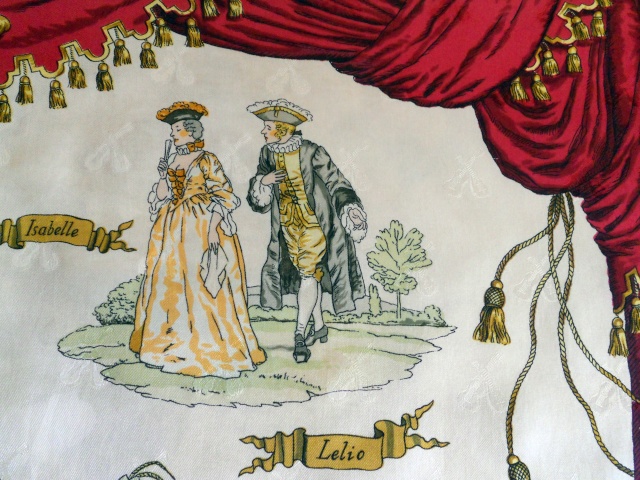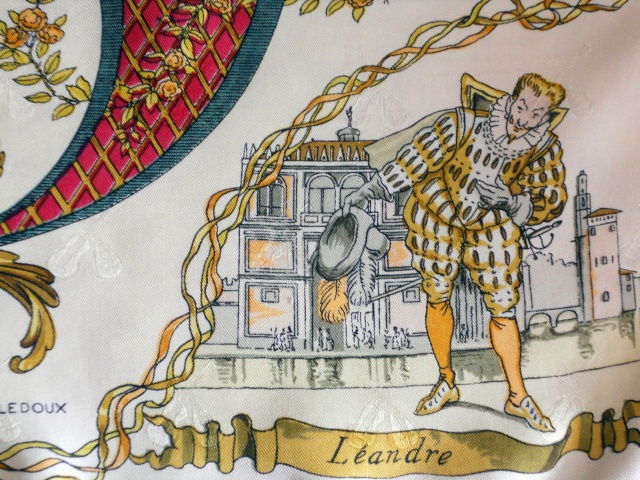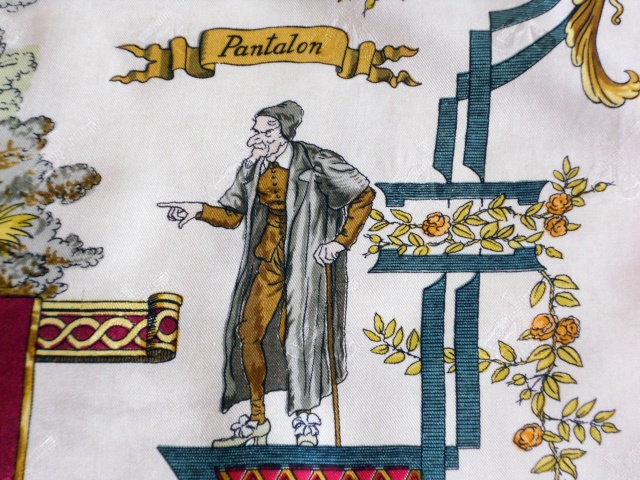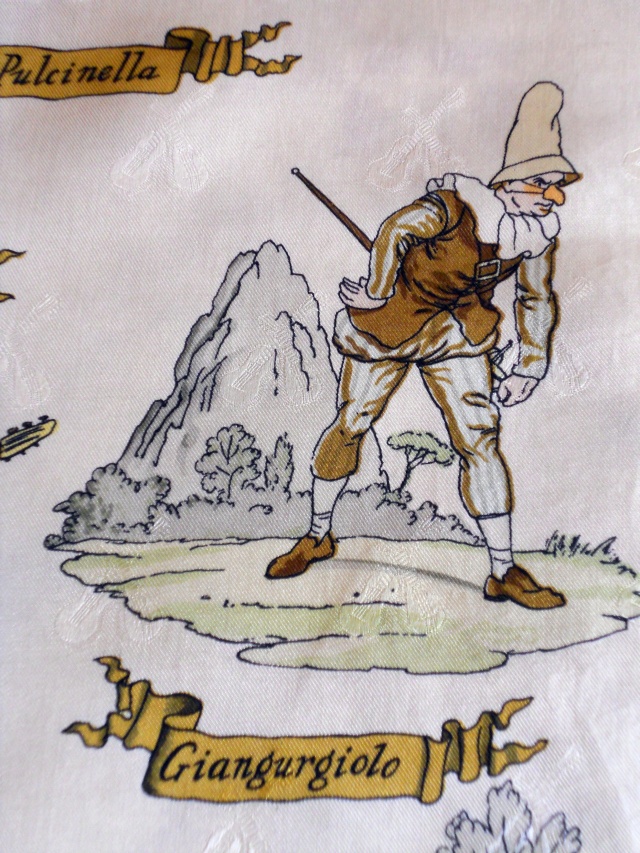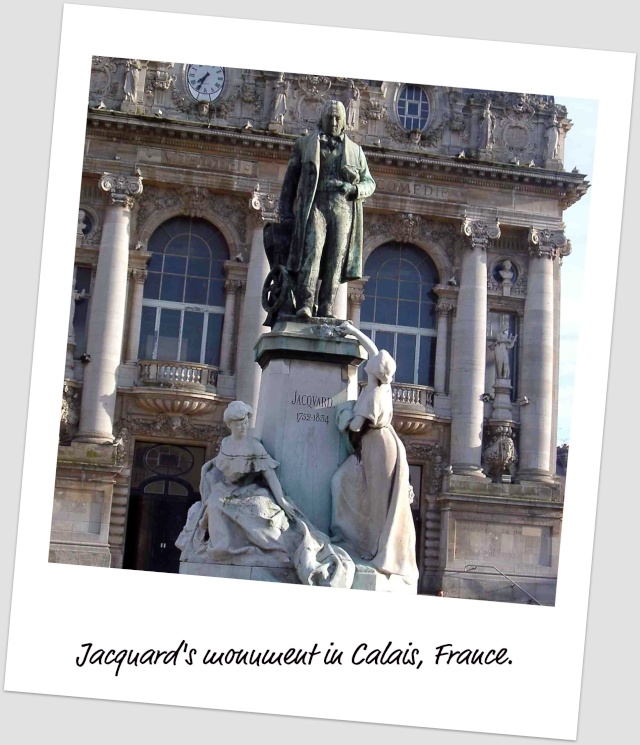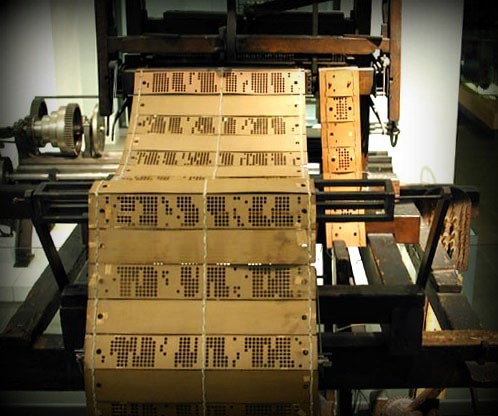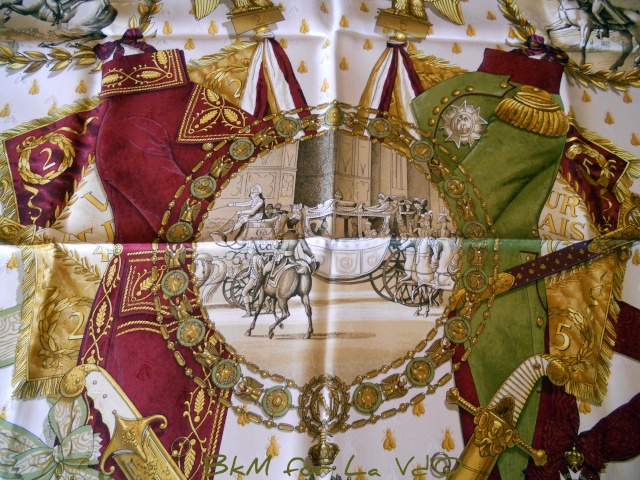January is practically over and Carnaval is coming!
Carnevale, also known as carnival or mardi gras, is celebrated in Italy and many places around the world 40 days before Easter, a final party before Ash Wednesday and Lent. Could it be a better time to review this scarf?
LE CARNAVAL DE VENISE 1993 / FETES VENITIENNES 1999
Hubert de Watrigant
Jacquard silk
Catalogued: 4C/4D
Both scarves share the same design by Hubert de Watrigan on Jacquard Silk, the first of them, Le Carnaval de Venise is from 1993 while the second one, Fetes Venitiennes was issued in 1999. The Carnevale Comitee of Venice threatened to sue Hermès for the use of the name "Le Carnaval de Venise", forcing them to change the name of the scarf to "Fetes Venitiennes".
This is one of the most colorful Hermes scarves and features a great number of color screens, its vibrant harmony makes it extremely attractive.
At the center, the design features a group of passerbyes dressed in period finery admiring a lovely view of San Marco Basilica and Campanile, both in Piazza San Marco, around this beautiful settecento scene, there are groups of people dressed in carnaval costumes, typically inspired in La Commedia dell'Arte masks: Arlecchino, Bauta, Capitano, Brigella, Pulcinella... see La Comedie Italienne if you want to learn more about it.

The scarf is a masterpiece of geometry and use of color. It is divided in four main rhombus squares whose background color is repeated in the adjoining triangle to the left forming a stunning game of clever dynamism. Geometry is also present in the Venetian mooring poles and the gothic Venetian window at the center (Thank you dear Bonnie for your contribution):

Photo credit: Bonnie
The details of the characters are also amazing, the delicacy of the gestures and the clothes reminds me of the best vintages by Ledoux:
Le Carnaval de Venise and Fetes Venitiannes, has been produced in a wide array of colors always with contrast hems and beautiful combinations, thank you ScarfAddict for lending me your pictures:
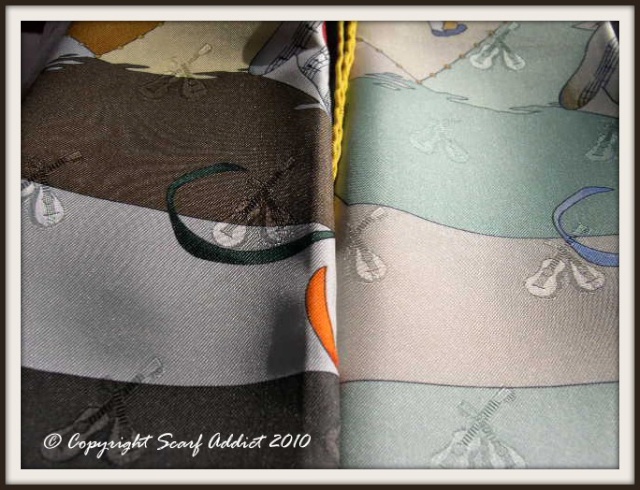

I hope you have enjoyed this review. Next week, I intend to go on with Hubert de Watrigant part III featuring a special issue on Spanish themed scarves: Plaza de Toros, Feria de Sevilla and Real Escuela Andaluza del Arte Ecuestre, so we'll back to equestrian themes! Ci vediamo allora!
